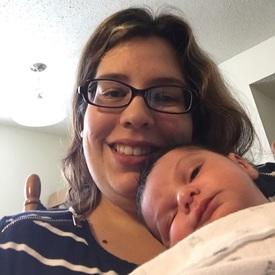FitBit

schellerica
Posts: 11 Member
Does anyone use a FitBit? I was wondering if so, how effective you think it is in helping you track your fitness goals & what model you have .. There are a few in the $99-$149 range I was looking at online but not sure if it's worth it, any downsides, or which features are most helpful. Or if you have any other suggestions for more accurately calculating calories burned, etc... Thanks!
0
Replies
-
I've got the basic fitbit zip. It is the best thing I could have done.
Before getting it I was averaging 2,000ish steps a day. Now I'm hitting 20,000 pretty consistently.
The only exercise I do is walking. So I have no need for the fancier heart rate monitor devices. Plus it clips on my bra, and you can't tell I'm wearing it.0 -
Depends. I have a charge and find it really usefull and motivating. If I'm pnly at 6000 steps afer dinner I'll go for a walk.
It's useless for tracking many other sports though, Although if you get one with a hr you can override the steps and it will calculate calorie burn for the work out (not sure how accurate). I wish I'd forked over a little extra for a heart rate monitor one0 -
I have the Fitbit One. I do like the way it tracks activity, plus I also use it to track my sleep.0
-
Which Fitbit you choose is entirely a matter of personal preference. They all calculate your TDEE and sync with MFP.
Fitbit challenges are great motivation—and fun. You can learn more in the Fitbit Users group: http://community.myfitnesspal.com/en/group/1290-fitbit-users0 -
i have fitbit flex , and its really great , its changed my lifestyle much better,0
-
I love my Fitbit Flex! And I ordered a bunch of bands on amazon for like $15, so I can change it around. Their customer service is superb too!0
-
I have the charge hr and love it. I've been way more motivated since purchasing it back in april.0
-
im on the charge HR too and it does motivate you. hgaving it go off and celebrate hitting your calorie burn goal for the day is pretty motivating0
-
I have a flex. Its great, and fun too.0
-
I have the charge HR and I love it.
I debated for a while about getting one, but found a good deal online and I am really happy with it.
It helps motivate me a LOT! I am always looking out for extra stairs to climb, and make a conscious effort to move more.0 -
I have the Fitbit Charge and it TOTALLY kept me motivated to move around. Plus having challenges to do with my friends makes it fun too.0
-
I have the Charge HR and it has helped immensely with keeping me motivated. Hitting all of those daily goals and how easily it syncs with MFP.. I just love it! I also like how it tracks your sleep. From everything I've read it's not too great for accurately gauging calorie burns for HIIT but works well for walking/running. Even though I do a lot of HIIT it still helps give me a rough idea of what I'm burning and that definitely helps me out a ton. I would highly recommend it.0
-
I have the One and love it.0
-
LOVE my Charge HR! The HR info is awesome, had a Flex for a year before upgrading. Both are awesome, HR info just happens to be very important to me. (lots of heart issues in my family)0
-
I don't have a fitbit but I have a Jawbone Up 24 which is practically the same thing! I love it so much. It helps me take more steps, walk more miles. I'm a competitive person so if I see i'm not in 1st place or something I start walking more! Definitely has helped.0
-
Thanks guys!0
-
I have my flex set to buzz at certain points in the day to remind me to get up and move a bit. Really helps at work.0
-
I just returned my charge and bout the HR. I figured why not for $20 more. I'm glad I did.0
-
I like my Fitbit Charge. I have had it three days and it is helping me get in my steps. I am wondering if I should track non-step exercise. As an example, I have been doing active gardening (digging, planting etc) for two+ hours and I know I "earned" steps but it seems like I may have used more calories than just the steps.
Any suggestions?0 -
I have a FitBit One because I don't like things on my wrists and I use a treadmill desk. Lurve it!
Totally answered this twice. Sorry. LOL!0 -
I am wondering if I should track non-step exercise. As an example, I have been doing active gardening (digging, planting etc) for two+ hours and I know I "earned" steps but it seems like I may have used more calories than just the steps.
No need to log any step-based activity—your Fitbit is tracking it for you. Log non-step exercise (like swimming or biking) either in Fitbit (that's what I do) or in MFP—never both. Exercise logged in MFP overwrites your Fitbit burn during that time.
Your Fitbit burn is TDEE. Your default MFP calorie goal is activity level minus deficit. Adjustments are the difference between your Fitbit burn and your MFP activity level.
With or without a Fitbit, one should never log anything other than actual exercise—including work, a daily commute, housework, yard work, or child care. That's all part of your activity level. Only log exercise as exercise.0 -
Really??? Even if I garden (i.e., digging, planting, heavy duty work)?0
-
I have the Fitbit Flex and it is great BUT--and this is significant--they've had to replace it twice in the last 12 months.0
-
I have an HR. I really like it. It really helps keep me aware of my activity on my non-work days. (Which if i don't actually do something, is almost nothing.)0
-
-
-
Really??? Even if I garden (i.e., digging, planting, heavy duty work)?
I suspect it's worth the application of a little bit of common sense. Something like gardening isn't consistently the same workload, so it's pretty ridiculous not to account for it somehow, although equally it's not the same workload in a single day.
Something like weeding, pruning, tying etc I probably wouldn't consider as the workload isn't high and it's lost in the noise of routine error.
Heavy work like brushcutting, hedge trimming, etc I'd generally log about 25-30% of the time as I'm clearly doing a lot more work, but couldn't say that it was consistently high demand. If I spend 4 hours on hedges then that'll include moving ladders, wielding the chainsaw and hedge trimmer, cutting up debris, loading the barrow, moving the debris etc. Clearly not background level activity that would compare to my normal job where I'm a programme manager so worth recognising somehow. Equally my activity tracker will have some false positives, from the cutting etc, but equally will have a suppressed detection rate when I'm pushing the wheelbarrow.
It's the same with other activities, apply a bit of thought. As an example pushing my partner in a wheelchair doesn't give a reasonable reflection of steps, and I'm also moving significantly more than my own bodyweight. It could be accounted for somehow, although in practice going out for a short run will give me 600-700 calories anyway so I probably wouldn't get worked up about the marginal increment.
The main reason to worry about accounting for unusual work is if you're on a tight deficit and would start to consistently fall below 1200 cals/ 1600 cals so end up leading oneself into a longer term health issue by underfuelling.
These things aren't a magic bullet, despite the way so many proselytise. n Apply some thought to what they're telling you, rather than blindly trusting them.0 -
Thanks everyone. Maybe I will only count the time when my heart rate goes up and I am out of breath. :-)0
-
The Fitbit HR measures your TDEE -- what you burn all day, including activity. So for instance, mine at the end of the day says 1600 calories. That doesn't mean I should eat my calorie goal, plus 1600. I should eat 1600 because that's my Basal Metabolism Rate plus my activity. Or if I want to lose, I would eat at a deficit, say 1200. If you sync to MFP it will figure out what you need to eat on the deficit.0
-
The Fitbit HR measures your TDEE -- what you burn all day, including activity. So for instance, mine at the end of the day says 1600 calories. That doesn't mean I should eat my calorie goal, plus 1600. I should eat 1600 because that's my Basal Metabolism Rate plus my activity. Or if I want to lose, I would eat at a deficit, say 1200. If you sync to MFP it will figure out what you need to eat on the deficit.
All Fitbits calculate your TDEE, the calories necessary to maintain your current weight. To lose weight, you need to eat TDEE minus an appropriate deficit for your size.
Set your goal to .5 lb. for every 25 lbs. you're overweight: http://www.myfitnesspal.com/account/change_goals_guided
Enable negative calorie adjustments: http://www.myfitnesspal.com/account/diary_settings
Ignore your Fitbit calorie goal and follow MFP's, eating back your adjustments.
You can learn more in the Fitbit Users group: http://community.myfitnesspal.com/en/group/1290-fitbit-users0
This discussion has been closed.
Categories
- All Categories
- 1.4M Health, Wellness and Goals
- 398.2K Introduce Yourself
- 44.7K Getting Started
- 261K Health and Weight Loss
- 176.4K Food and Nutrition
- 47.7K Recipes
- 233K Fitness and Exercise
- 462 Sleep, Mindfulness and Overall Wellness
- 6.5K Goal: Maintaining Weight
- 8.7K Goal: Gaining Weight and Body Building
- 153.5K Motivation and Support
- 8.4K Challenges
- 1.4K Debate Club
- 96.5K Chit-Chat
- 2.6K Fun and Games
- 4.8K MyFitnessPal Information
- 12 News and Announcements
- 21 MyFitnessPal Academy
- 1.6K Feature Suggestions and Ideas
- 3.2K MyFitnessPal Tech Support Questions





















